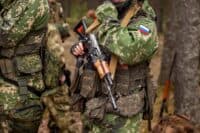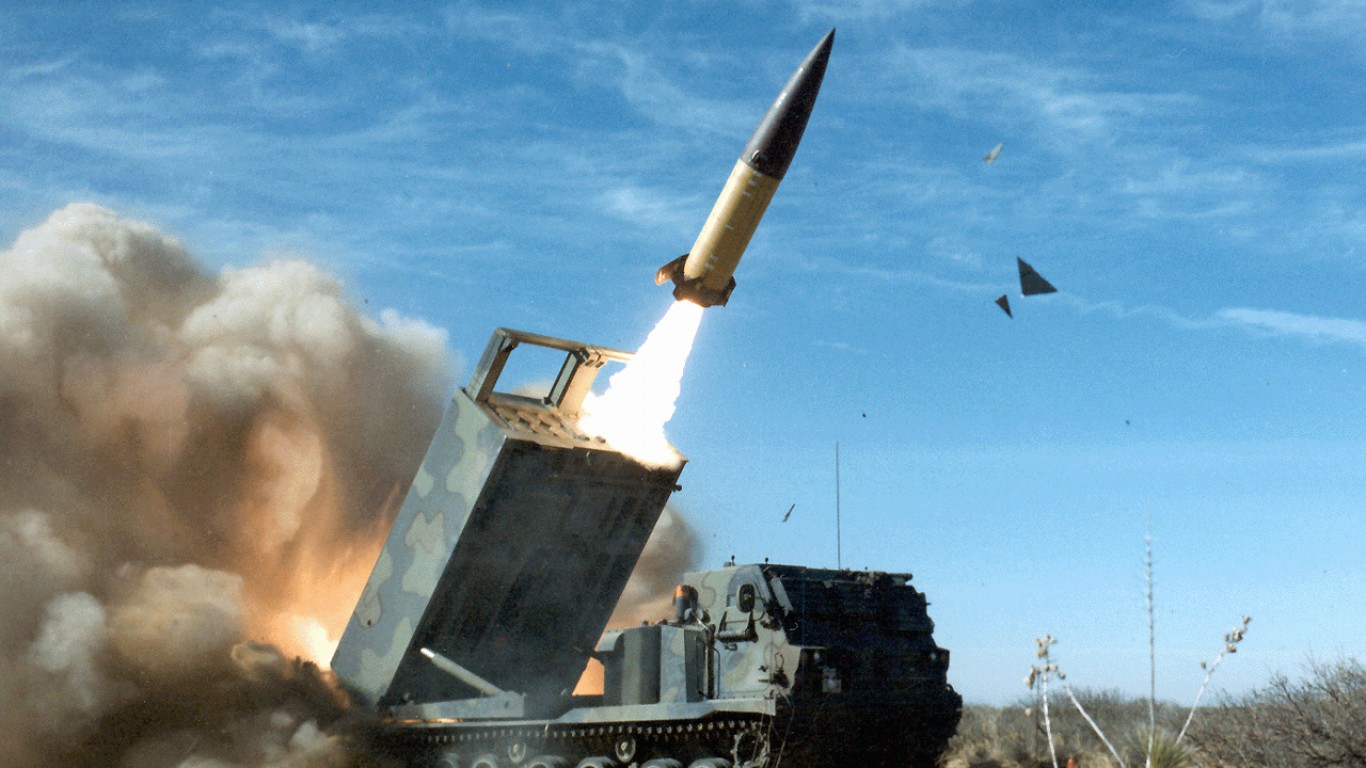
The United States spends more on its military than any other country in the world; in fact, more than the next 10 large spenders combined! In all, U.S. defense spending is about 40% of the world total. In recent years, aggressive actions by Russia, Iran, China, and North Korea have all prompted a rethinking of our weapons systems and military deployments overseas. In this article, we’ll break down some of the most expensive weapons on the Pentagon’s wish list, as reported in the 2025 DoD budget request. It’s useful information for all voters, but of particular use to investors in the defense sector.
24/7 Wall St. Insights
- The defense budget request for 2025 is $849.8 billion.
- Some of the Defense Department’s most expensive weapons systems are naval assets, aircraft, and missile technology.
- Also: 2 Dividend Legends to Hold Forever
How Big is the U.S. Defense Budget?

In recent years the U.S. defense budget has been growing moderately, from $820 billion in 2023, $825 billion budgeted for 2024, and a 2025 budget request of $849.8 billion. Defense spending averages about 13-15% of the total United States budget. The U.S. economy has grown faster than the defense budget, so defense spending has become a smaller percentage of the GDP over time.
How Do Other Countries Compare?

Countries are secretive about their military budgets and may hide defense spending in other budget categories. Countries that have conscription generally don’t have to spend as much on their troops as those like the United States with an all-volunteer military. With variables like these in mind, below are the world’s biggest military spenders after the United States as of 2023, data courtesy of the SIPRI Military Expenditure Database. Note that with the exception of China, Russia, and India every other country on this list is a U.S. ally or near-ally.
- China $292 billion
- Russia – $86.4 billion
- India – $83.5 billion
- Saudi Arabia – $75.8 billion
- United Kingdom – $74.9 billion
- Germany – $66.8 billion
- France – $61.3 billion
- Ukraine – $64.8 billion
- Japan – $50.1 billion
- South Korea – $47.9 billion
- Italy – $35.5 billion
- Australia – $32.3 billion
- Israel – $27.5 billion
- Canada – $27.2 billion
Why Does the U.S. Need Such a Large Defense?

For most of its history, the United States has tried to remain out of foreign wars. This came back to bite us in World War I and II, however, when American non-involvement allowed foreign threats to grow to the point that they became a threat to the U.S. homeland. Thus, during the Cold War, the United States led a global coalition to oppose the spread of communism.
The collapse of communism has not eliminated the aggressive designs of Russia, China, and North Korea, as well as Iran and various terrorist groups across the Middle East. The U.S. continues to spearhead efforts to keep the world free and the seas open for trade, for its own national security and trade interests.
What’s in the 2025 Budget Request?

The 2025 request includes $48.1 billion for naval assets, $61.2 billion for airborne defense, and $13 billion for the Army and Marine Corps. $33.7 billion is allocated for space defense operations, and $14.5 billion for cybersecurity. $49.1 billion will modernize the country’s nuclear arsenal. Service members will get a 4.5% pay raise. Here are some of the most expensive weapons systems the country is investing in.
13. GMLRS Guided Multiple Launch Rocket System ($1.2 billion)

This system, produced by Lockheed Martin, offers long-range surface-to-surface precision-strike capabilities with more than 98% reliability. It functions in all weather and is rapidly deployable.
12. Aegis Sea-Based Weapons System ($1.3 billion)

Aegis is an integrated naval weapons system that tracks and guides weapons to destroy enemy targets. It’s deployed not only on U.S. ships but by some of our allies: Japan, Spain, Norway, South Korea, Australia, and Canada. The name “Aegis” comes from Greek mythology. It was a protective shield of Zeus worn by the goddess Athena.
11. CVN 78 Gerald R. Ford Class Nuclear Aircraft Carrier ($2.3 billion)F-15 Eagle
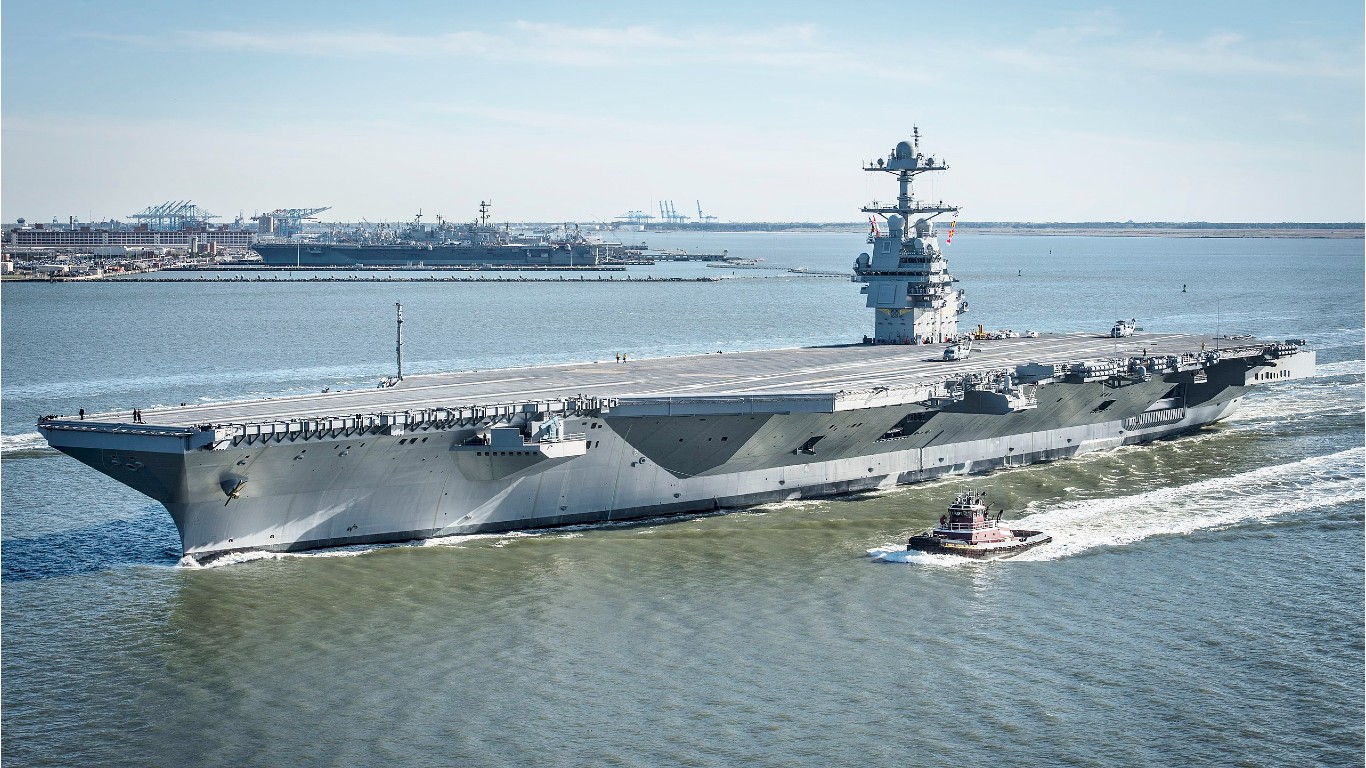
The U.S. Navy plans to replace all its aircraft carriers with 10 of the Gerald R. Ford class, the most technologically advanced carriers in the world. These nuclear-powered carriers are more automated than their predecessors, reducing the crew by several hundred. It has an electromagnetic aircraft launch system and advanced stealth features. It can carry up to 90 aircraft.
10. F-15 Eagle ($2.4 billion)
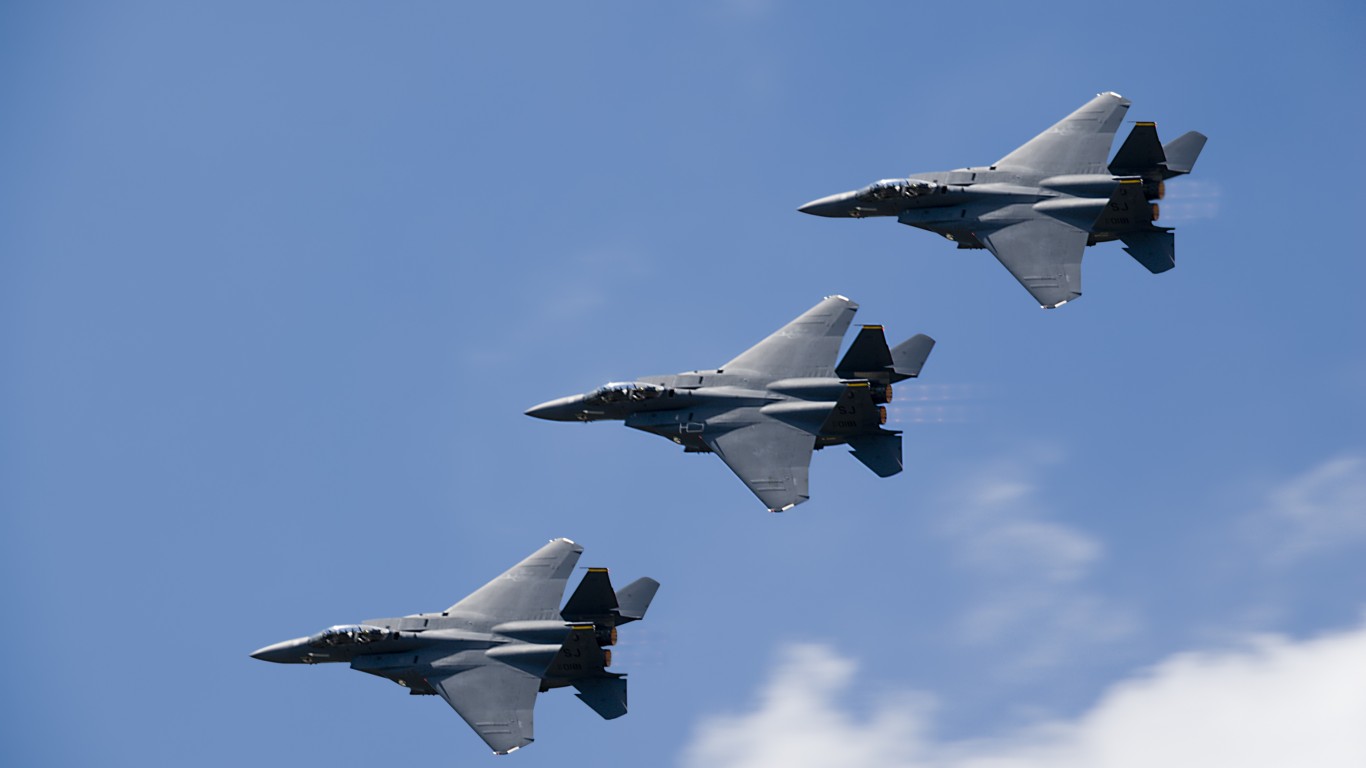
This is a 4th generation supersonic fighter with air-to-air and air-to-ground attack capabilities. It serves as a support aircraft for the 5th generation fighter fleet.
9. GMD Ground-based Midcourse Defense ($2.5 billion)

The Ground-Based Midcourse Defense system enables the military to shoot down incoming ballistic missiles while they are still above the atmosphere. The GMD uses a three-stage solid fuel booster to launch a kill vehicle into space, ramming it into the enemy missile at 15,000 miles an hour. The existing elements of the system are currently based in Alaska and California, well-positioned to defend the homeland from a North Korean attack.
8. CH-53K Heavy Lift Replacement Helicopter ($2.7 billion)
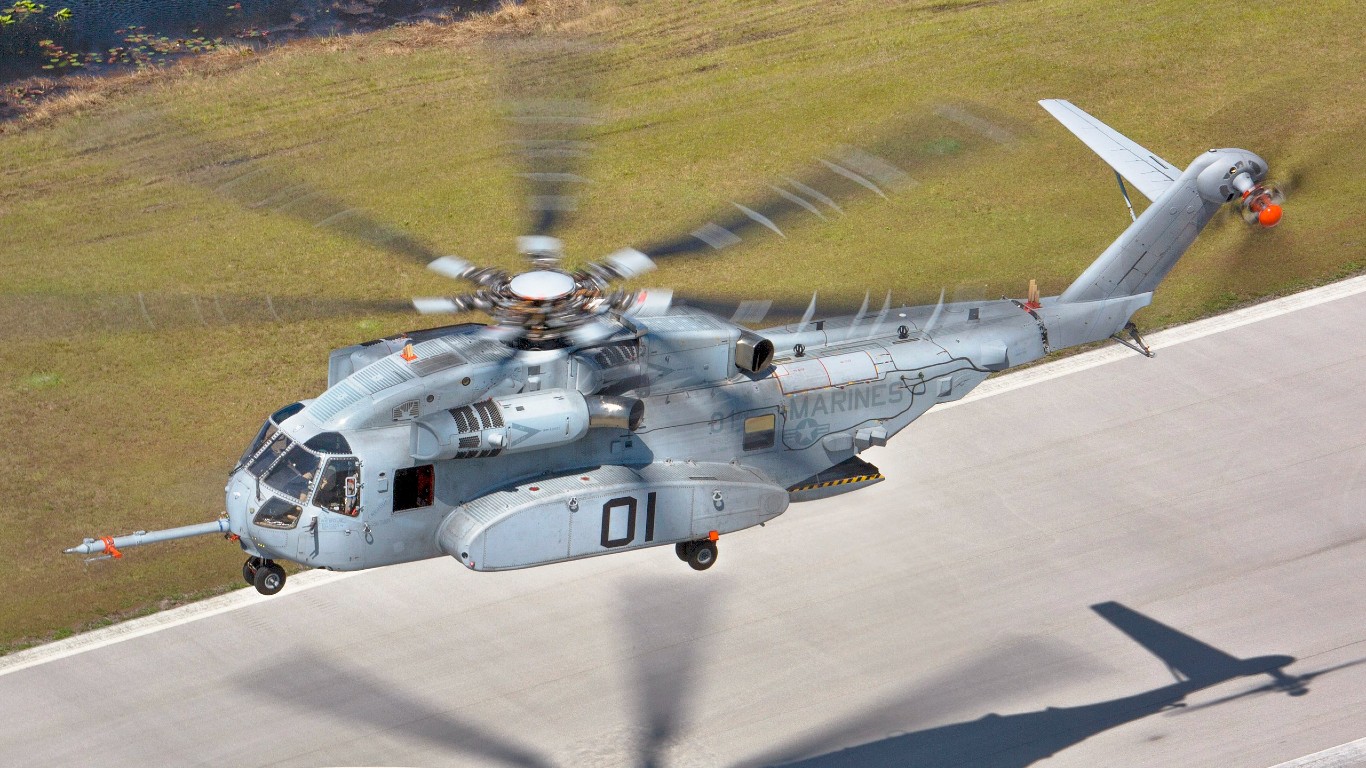
The CH-35K King Stallion (Sikorsky S-95) is the largest and heaviest helicopter used by the United States military. It is part of a series of helicopters that have served the U.S. well since 1966. The U.S. Marine Corps plans for a fleet of 200, costing $25 billion spread out over multiple years.
7. LGM-35A Sentinel ($3 billion)
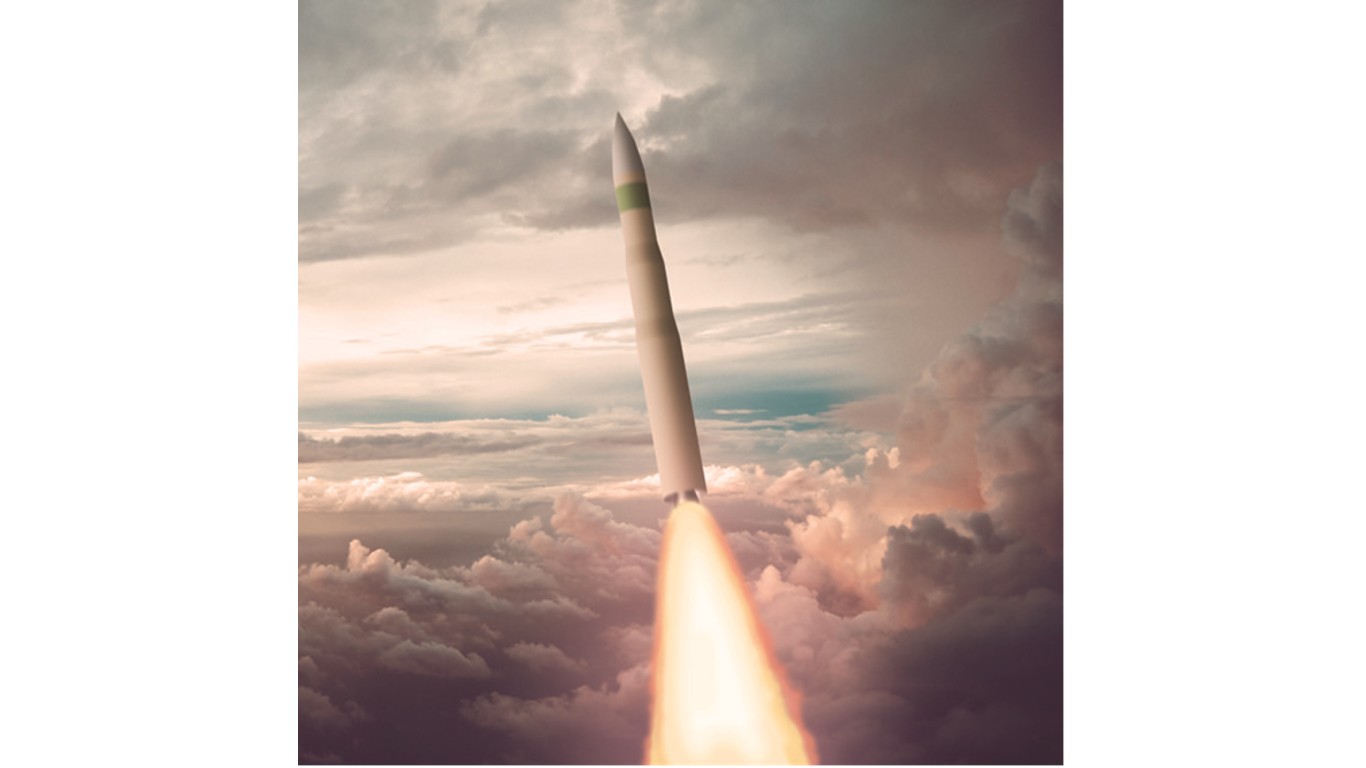
The LGM-35A Sentinel is a replacement for the seriously outdated Minuteman III ICBM system that was fielded as part of the U.S. nuclear arsenal in the 1970s. The budget request will not only fund the new missiles, but replacement silos, control centers, and other infrastructure to operate the missiles effectively.
6. OPIR Space-Based Missile Warning Systems ($4.7 billion)

The Next Generation Overhead Persistent Infrared Program (OPIR) fields satellites with the capability to provide intelligence on enemy missile technology, detect and track enemy missile launches, and support battlefield awareness and missile defense.
5. B-21 Raider ($5.3 billion)

The B-21 is a long-range strike bomber that will replace the B-1 and B-2. It has the ability to penetrate modern air defenses to deliver conventional or nuclear payloads deep in enemy territory.
4. DDG Arleigh Burke Class Destroyer ($7.1 billion)
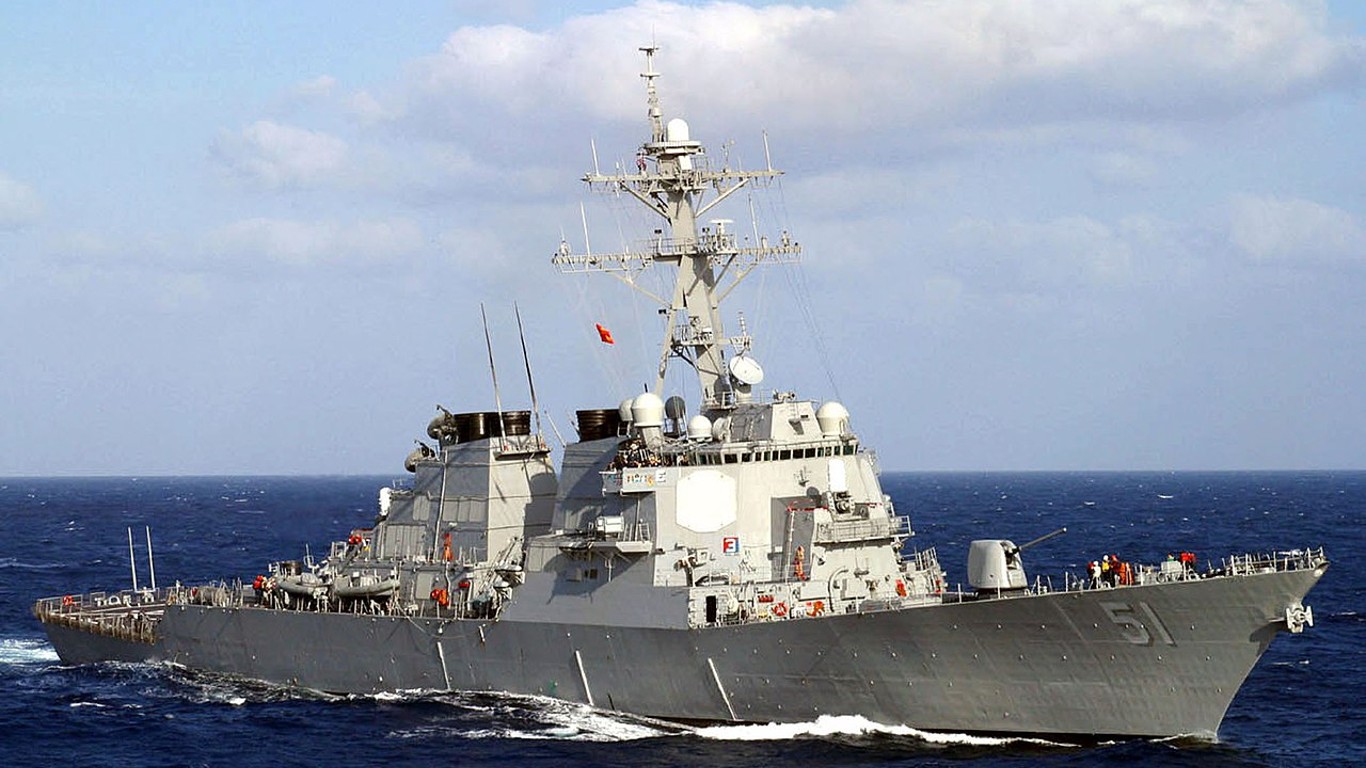
This guided missile destroyer operates independently or as part of a carrier strike group to combat enemy aircraft, submarines, and surface ships. The funding request for 2025 will build two of the ships toward a planned feet of 9.
3. SSN 774 Virginia Class Submarine ($8.2 billion)

The Virginia class nuclear-powered submarine has advanced stealth features to be used in Special Operations. It can launch conventional or nuclear-tipped Tomahawk cruise missiles. Its primary function is as an attack submarine to destroy enemy ships and submarines.
2. SSBN 826 Columbia Class Ballistic Missile Submarine ($9.9 billion)
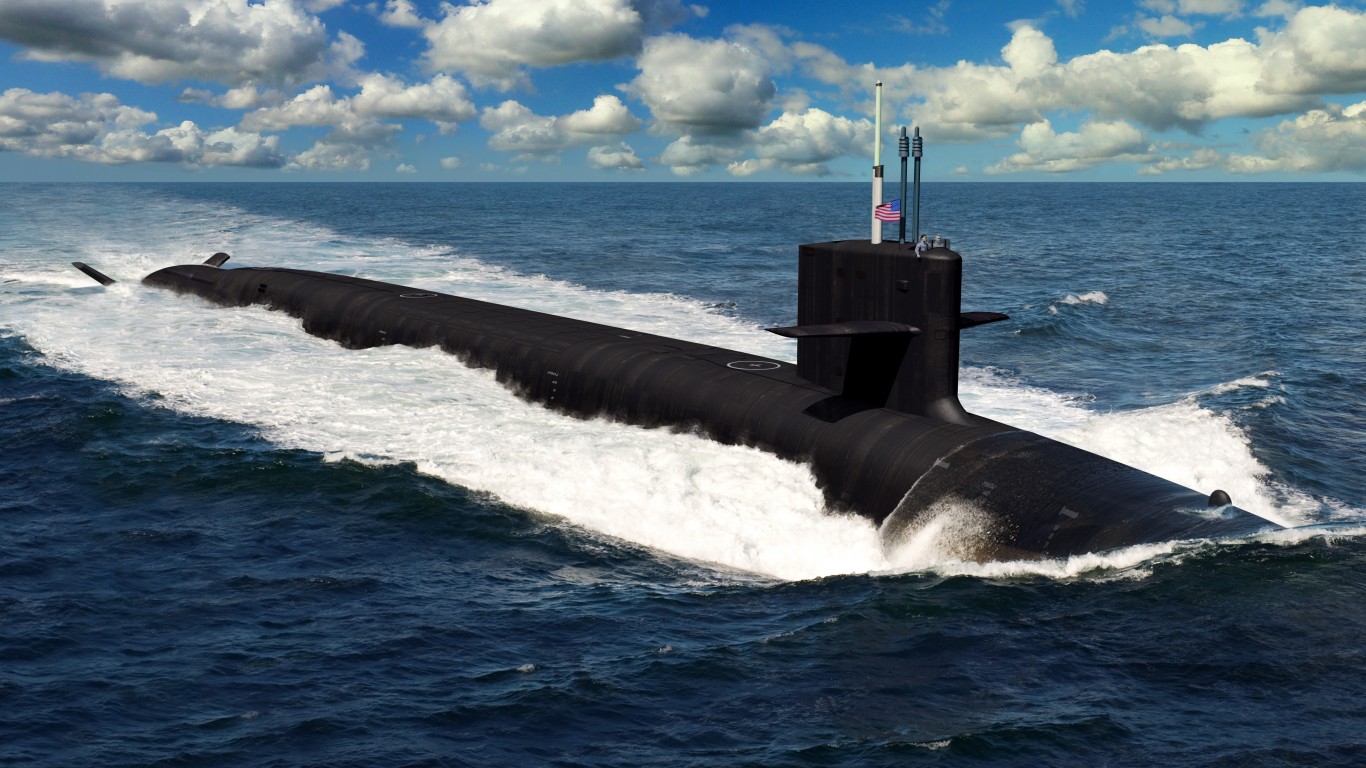
Columbia-class ballistic missile submarines are the replacement for the navy’s aging Ohio-class vessels. A total of 12 are planned, each capable of launching 16 Trident II ballistic missiles. Each unit will cost between $4.9-6.2 billion and will absorb a large percentage of the Navy’s shipbuilding budget.
1. F-35 Joint Strike Fighter ($12.4 billion)
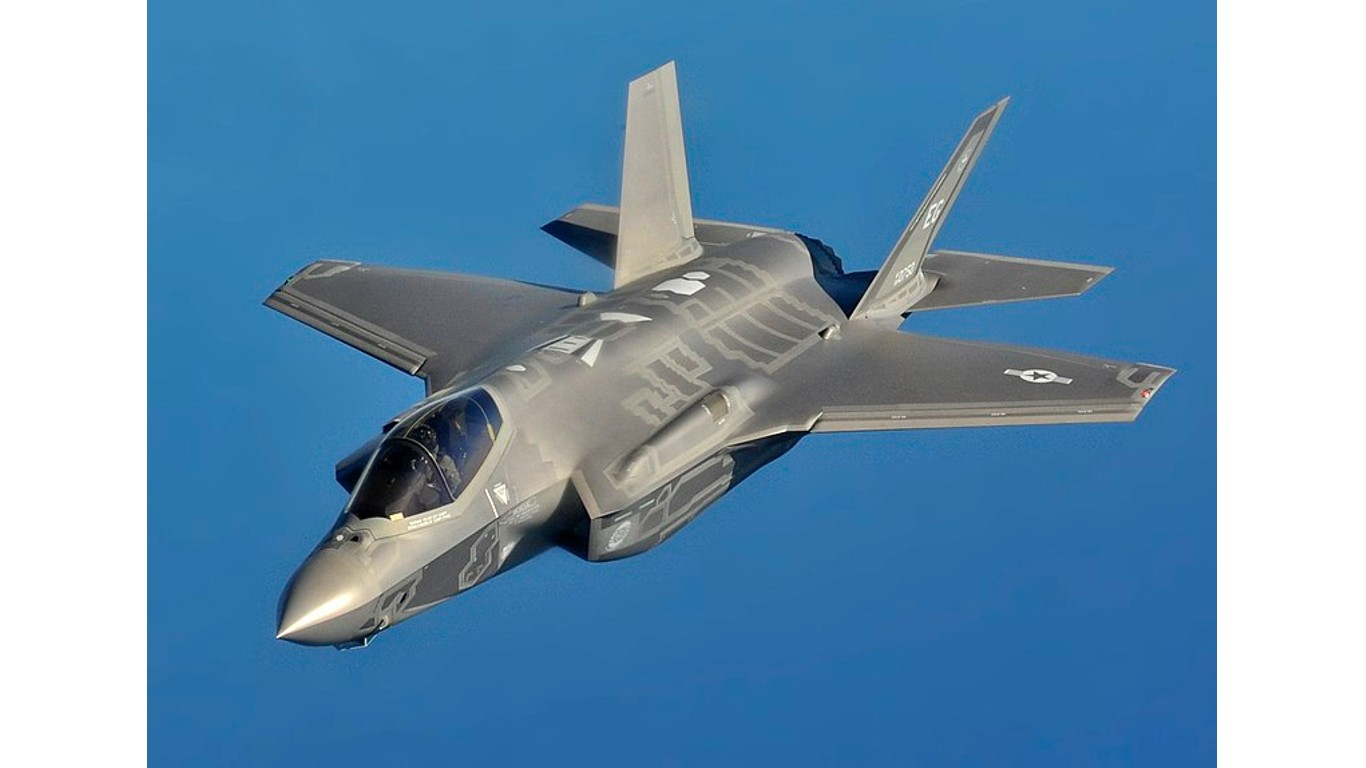
The F-35 is a 5th-generation fighter for the Navy, Marines, and Air Force. It has been described as the most lethal, survivable, and connected fighter aircraft ever built. It is also one of the most technologically complex aircraft. This has delayed production and inflated the price, making it a controversial purchase. To save on costs, the fighter is being developed as a multinational effort with American allies that are purchasing the aircraft for their own arsenals.
Take Charge of Your Retirement In Just A Few Minutes (Sponsor)
Retirement planning doesn’t have to feel overwhelming. The key is finding expert guidance—and SmartAsset’s simple quiz makes it easier than ever for you to connect with a vetted financial advisor.
Here’s how it works:
- Answer a Few Simple Questions. Tell us a bit about your goals and preferences—it only takes a few minutes!
- Get Matched with Vetted Advisors Our smart tool matches you with up to three pre-screened, vetted advisors who serve your area and are held to a fiduciary standard to act in your best interests. Click here to begin
- Choose Your Fit Review their profiles, schedule an introductory call (or meet in person), and select the advisor who feel is right for you.
Why wait? Start building the retirement you’ve always dreamed of. Click here to get started today!
Thank you for reading! Have some feedback for us?
Contact the 24/7 Wall St. editorial team.



